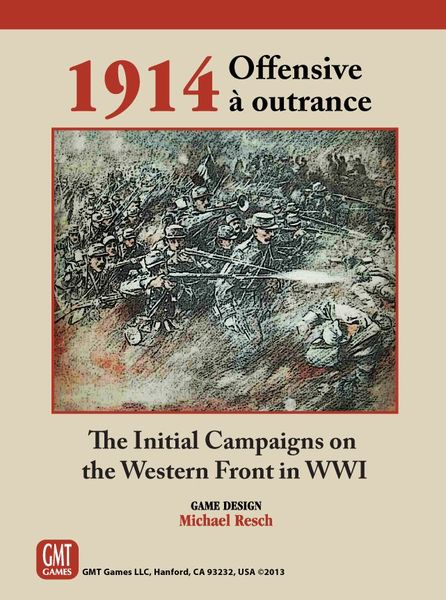1914: Offensive à outrance (2013) Board Game
1914: Offensive à outrance is a board game that focuses on the battles of World War I. The game is designed by Michael Resch and published by GMT Games in in 2013. It is a wargame that allows 1-4 players to engage in tactical and strategic warfare on a hexagon grid.
Game Components of 1914: Offensive à outrance
How To Setup 1914: Offensive à outrance
Setting up the game involves several steps, including laying out the map sheets, which cover the entire theater of war from the English Channel to the Swiss Border. Players must also organize the counters, which represent various military units, and set up the organizational displays to show the relationships between different formations and armies. The game includes a detailed rules booklet and scenario booklet to guide the setup process. The introductory scenario, “The Battle for Lorraine,” is recommended for new players to familiarize themselves with the game mechanics.
Gameplay Mechanics and Game Objective
Player Experience
**1914: Offensive à outrance** offers a deeply immersive and historically accurate experience, allowing players to explore the complexities of World War I’s opening campaigns. The game demands strategic thinking and patience, as players must manage large-scale military operations over several months. The game’s design ensures that players feel the historical weight of the campaign, with its multiple stages, including the German advance, the Battle of the Marne, and the subsequent “Race to the Sea”.
Pros
Cons
Personal Thoughts on 1914: Offensive à outrance
This game is a must-have for World War I enthusiasts and serious wargamers. It is designed for players who are willing to invest time and effort into mastering its complex mechanics. While it may not be suitable for casual gamers due to its complexity and time requirements, it offers a rewarding experience for those who are passionate about historical wargaming. The game’s ability to balance historical accuracy with engaging gameplay makes it a standout in its genre.
We are supported by our audience. When you purchase through links on our site, we may earn an affiliate commission, at no extra cost for you. Learn more.

